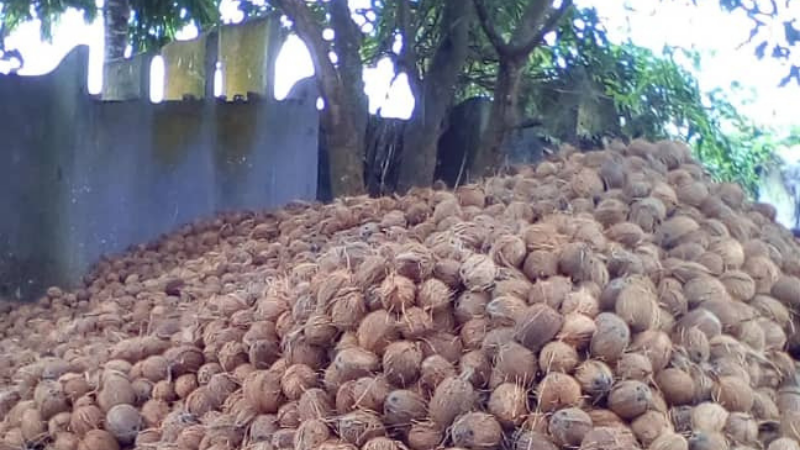by Nzema Jomoro Coconut Farmers’ Association
Description
Climate change has resulted in heavy, repeated and long periods of rain, which initially lead to an increased coconut harvest in the rainy season, that then results as a surplus. This leads to marketing challenges and reduced prices, with low incomes for farmers.
Meanwhile, in the dry season, there is a reduced coconut production, with higher prices.
To overcome these challenges, the members of the association determined to go with the dynamics of demand and supply by storing coconuts during the period of surplus, in order to get more income and profit during the dry season, when there is a high demand for coconut and resulting price increases. This has enabled group members to coordinate to cart their produce collectively into urban areas with more increased profits.
Results
This practice implemented by coconut producers has resulted in reduced waste and generated a stable level of income in the year-round.
Climate smartness*
The leadership of this initiative is in charge of a national farmers’ association (COFAG), this may help its scaling and guarantees benefits for many.
The described practise is completely framed within the CSA approach, which is based on the pillars of adaptation, mitigation and productivity since by controlling the quantities offered to the market, the producers reduced the climate impacts on their incomes, improving
their adaptive capacity. In addition, they have reduced their GHG emissions by reducing the waste generated in the production and sale process.
The practice can be improved if the waste is used to generate energy or biofertilizers (further reducing its emissions).
Furthermore, if coconut transformation is included, producers can generate added value to the product and thus generate greater income to the association.
*This is done in the framework of climate-smart agriculture (CSA) approach. Climate-smartness in agriculture means understanding impacts of climate change and variability along with the agricultural activity, which includes the planning of what crop to plant, when to plant, what variety to plant and what type of management practices are needed to reduce the impact on the environment (e.g. emissions reduction), maintain or increase productivity (e.g. yields) while increasing resilience and improving livelihoods.


